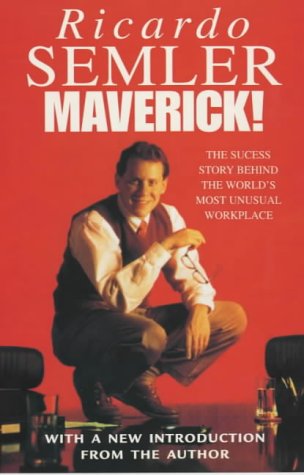 After hearing my thoughts on HR in a Skype chat, a fellow ThinkSync member recommended that I get my hands on some of Semler’s work. The irony is that it has been sitting in front of me in my book case for the last 2 years – the cheesy pic of Semler crouching on a desk told me to leave it alone! So I plunged in, and with with an opening line like this, I was grabbed …
After hearing my thoughts on HR in a Skype chat, a fellow ThinkSync member recommended that I get my hands on some of Semler’s work. The irony is that it has been sitting in front of me in my book case for the last 2 years – the cheesy pic of Semler crouching on a desk told me to leave it alone! So I plunged in, and with with an opening line like this, I was grabbed …
Just the other day, Clovis Bojikian, our Sultan for HR (yes, we still love to mock titles)and I sat around …
Since I first opened my copy of Tom Peters’ Re-imagine!, I have found voice for my committed but belligerent approach to revolutionising HR. Maverick is now another I have put in that arsenal of alternative voices. Before I tell you more about the book and its philosophies, here’s some info:
Wikipedia have a pretty succint take on the extraordinary life of Semler. You can also visit Semco’s entertaining website – if you can put up with the music – here (in English) as well as see some other reviews here. Back to the source …
Semler inherited a position in the industrial supplier his father set up that manufactured pumps, dishwashers, cooling units for air conditioners, and mixers. Wlaking into a beurocratic organisation, Semler felt out of place. Despite knowing that he was to one day run the joint, he knew that he had to revolutionise the company. One problem: his father and his loyalists. So while his father was away, he fired most of top managment … he wa in his early 20s!
This set off a course of events where he hired the guys he wanted, toured prolifically in an attempt to grow the business, and barely had to time to gather his thought. Then, still in his 20s, his Doc advised that he calm down, otherwise die prematurely.
As he learnt form these experience, he saw that what the business needed most was a sense of democracy: his employees where despondent and his executives where stiffs. In the tough and volatile Brazilian economy, he needed to innovate in order to keep his company alive and competitive. Some of the things he managed to implement, amongst others:
* He won over the union leaders – how many leaders can claim to have done this?
* He let people set their own salaries!
* He successfully squashed the power hierarchy into functional levels.
* He found value in employees once they left by helping them start their own businesses.
* An interview was conducted by the people who the encumbent would lead!
Semler’s style is backroom leadership as opposed to autocratic and visible. His ideas where laughed at. But he was resilient! In this book Semler tells of how he implemented these changes, but he does not give us a “How to”. Instead he profiles a culture and approach that is oft deemed soft and too risky – the price of embracing diversity is challenge!
As the English version of Turning the Tables, Maverick suffers from consistent spelling and grammar errors – most of which are quite funny in a “I can like to …” South African fashion. However, Semler make sup with his clarity of thought and captive style. This book is not too long, as books like this tend to be! But it is also a little scattered in a Terry Pratchet vibe where chronology is not as important as the substance of the message.
On the whole, Maverick provides a much needed example of how to implement Connection Economy principles. What makes this story special is that Semler was before his time! He shows us how we need to stick to our guns in terms of our message within the TomorrowToday.biz network.


